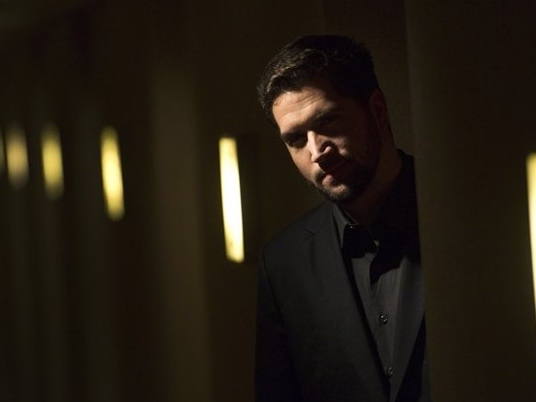
“The Cabin in the Woods” director Drew Goddard felt the same cynicism many share about the modern Hollywood system. Studios only want to make the same kinds of movie over and again – cookie cutter sequels, prequels and reboots.
But when he wrote the surprise 2008 hit “Cloverfield,” he learned firsthand an exception to that golden rule.
“If you keep your costs low, they’ll let you be different,” Goddard tells Big Hollywood, adding studios are simply protecting their investments when they homogenize blockbuster stories.
“We took that to ‘Cabin.’ We know ‘Cabin’ is going to be different, so it can’t cost very much … that was crucial to getting this made,” Goddard says.
“Cabin,” in theaters everywhere tomorrow, isn’t your typical horror movie. On the surface, it’s the tale of five scrappy friends who travel to a remote cabin for some hedonistic R&R, only to discover they aren’t alone in the woods. Been there, slashed that.
But to reveal where “Cabin” goes next is to ruin many of the surprises Goddard, the film’s director and co-writer, planned for audiences. Suffice to say the film’s meta awareness of the genre is as dominating a force as is the standard array of blood, guts and fright effects.
While the “Scream” franchise poked fun at horror movie tropes, “Cabin” goes much further. At times, it wags its cinematic finger at a genre that often takes storytelling short cuts and insults its audience.
“It’s like you treat your own family – you love them, but you kid. That’s how we felt,” he says. “I suppose it’s an angry film, but it’s not angry at the genre.”
Working without a major budget or built-in brand awareness didn’t hamper the production. It set it free, Goddard says.
“With horror movies, a bigger budget is actually your enemy. You want to feel the rough edges, the handmade quality to good horror films. It’s a genre that benefits from not having everything at your disposal,” he says.

Consider how readily audiences gobbled up “Cloverfield,” “The Blair Witch Project” and the 2012 release “The Devil Inside,” all films which used found footage to achieve that grainy, you-are-there aesthetic. Goddard thinks the found footage genre is “here to stay,” but it will soon be joined by other guerrilla style movie practices.
“There will be a Skype movie soon … someone will crack the code and it will be great. Then, they’ll be 30 Skype movies, and we’ll be like, oh, that’s boring. It’s cyclical,” he says.
Genre fare, the stuff Comic-Con events feast upon, are more often than not catnip to modern audiences. But it wasn’t always this way.
“Fifteen years ago, nobody wanted to do what we were doing,” he says. “Joss [Whedon] and J.J. [Abrams} were very much these fringe producers. It couldn’t have been less fashionable in terms of what the business wanted. The mainstream came to them, rather than the other way around.”
That means false genre prophets are clogging the entertainment content valve, to hear him tell it.
“I can feel it when people are making genre moves who don’t love the genre. It’s cynical. It’s happening much more in the past 10 years,” he says.
It’s a minor miracle that Goddard’s “Cabin” is hitting theaters in the first place this weekend. The film got entangled in the high-profile MGM bankruptcy case two years ago, the same snafu which delayed major projects like “The Hobbit” and the latest James Bond film, “Skyfall.”
In fact, Goddard wasn’t completely sure his film would reach the marketplace at all.
“You never know when you’re dealing with billion dollar bankruptcies,” he says. “But when you see heavyweights dropping like that … you just have to be patient and weather the storm.”
At times, it’s hard for Goddard to watch “Cabin” knowing that the technical matters he brought to the screen several years ago could now be fixed or massaged. It was tempting to perform a last-minute nip and tuck, but he decided to leave matters as is.
“At a certain point, you have to step away, but there are moments where I have a little more sympathy for Mr. [George] Lucas,” he says of the man renowned for updating his “Star Wars” features.

COMMENTS
Please let us know if you're having issues with commenting.